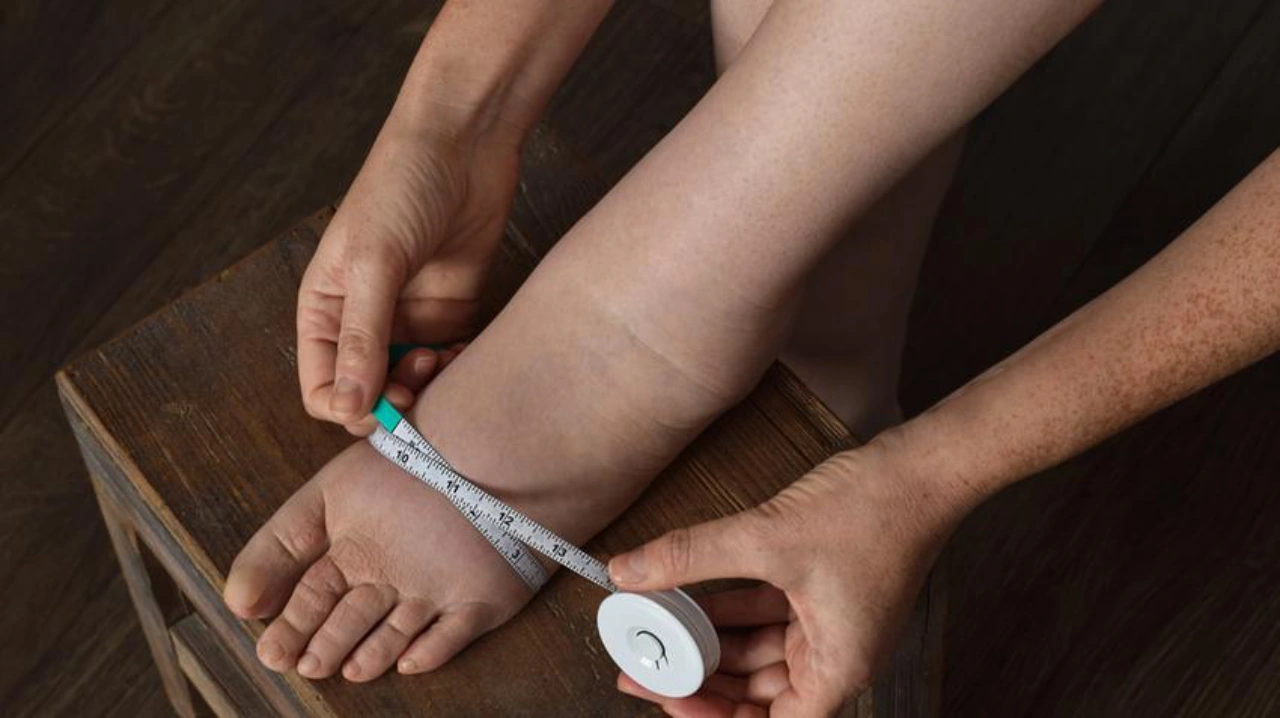
This is how lymphedema looks: the affected body part – whether it’s a limb, face, or torso – swells. It gradually spreads across the body, usually starting with swelling in the fingers, followed by the hand and foot, and then the edema progresses further.
What does the several liters of lymph circulating in the lymphatic vessels contain? Contrary to popular belief, it contains not only water but also proteins, fats, and cells.
Edema develops when lymph cannot drain for some reason, thus accumulating.
What’s the problem with lymphedema? It’s not just the uncomfortable swelling – which fortunately is not painful – but the fact itself that the lymphatic system is burdened with the honorable task of transporting large-sized cells, proteins, fats, and even hemorrhage out of our tissues. Lymphatic vessels, located alongside our blood vessels, and weaving through our muscles and skin, assist in this process. Their path leads through lymph nodes towards the large lymphatic ducts in the chest. However, if lymphedema develops, this fine system is disrupted.
– Signs are not yet visible because lymphatic circulation still functions quite well (at the limit of its capacity).
– Swelling is already visible, confirmed by the fingertip test.
– Irreversible changes occur, which cannot be easily reversed (this condition generally appears when the patient has neglected their lymphedema for several years).
Do you have a chance of getting lymphedema? The most common causes and risk factors of lymphedema include:
– Congenital lymphatic malformation
– Transient edema during the menstrual cycle
– Inflammation, hematoma, radiation therapy
– Benign lymphatic lesions
– Injury, inflammation, or disease of lymph nodes or lymphatic vessels (e.g., due to breast surgery)
Let’s start with prevention! The possibility of developing lymphedema should be taken seriously, and even if only one lymph node is removed from the body, lymphatic circulation is impaired, so the prevention process must be initiated.
Prevention is important because nobody knows in advance which group they belong to, how sensitive their body is, or what predispositions they have. Therefore, caution and prevention with the practice of appropriate lifestyle are important.
– Avoid constriction of limbs with tight clothing.
– Prevent skin injuries.
– Follow general lifestyle and skincare advice.
When things go wrong and lymph nodes need to be removed:
Individual reactions to one or more lymph node removals vary; some develop lymphedema immediately, while others anatomically remain so lucky that they stay completely healthy.
If surgery becomes necessary, doctors already pay attention to avoid removing too many lymph nodes if possible because they know how much their absence can disrupt the patient’s health.
Diagnosing lymphedema:
In addition to questioning the patient, understanding their medical history, and palpating the edema, laboratory tests are crucial in establishing a diagnosis.
It is important not to confuse lymphedema with edema associated with heart disease, endocrine disorders, or thrombosis.
Are you affected too? Here’s how you can manage your lymphedema:
Although we might think diuretics affect it, they don’t really, as they only make the leg harder (some water exits, leaving the protein behind). Unfortunately, elevating the legs doesn’t help either; we need to look for other solutions.
– Circulation-supporting physical therapy
– Manual lymphatic drainage (its maneuvers open previously non-functioning lymphatic capillaries, allowing the accumulated interstitial fluid to move towards intact lymphatic vessels and nodes)
– Wearing compression garments (enhances the pumping action of muscles)
– Proper skincare
The bad news is that lymphedema cannot be completely cured, but it can be managed with the above complex treatment. Visit the Swelless salon and let our therapists help with your recovery.